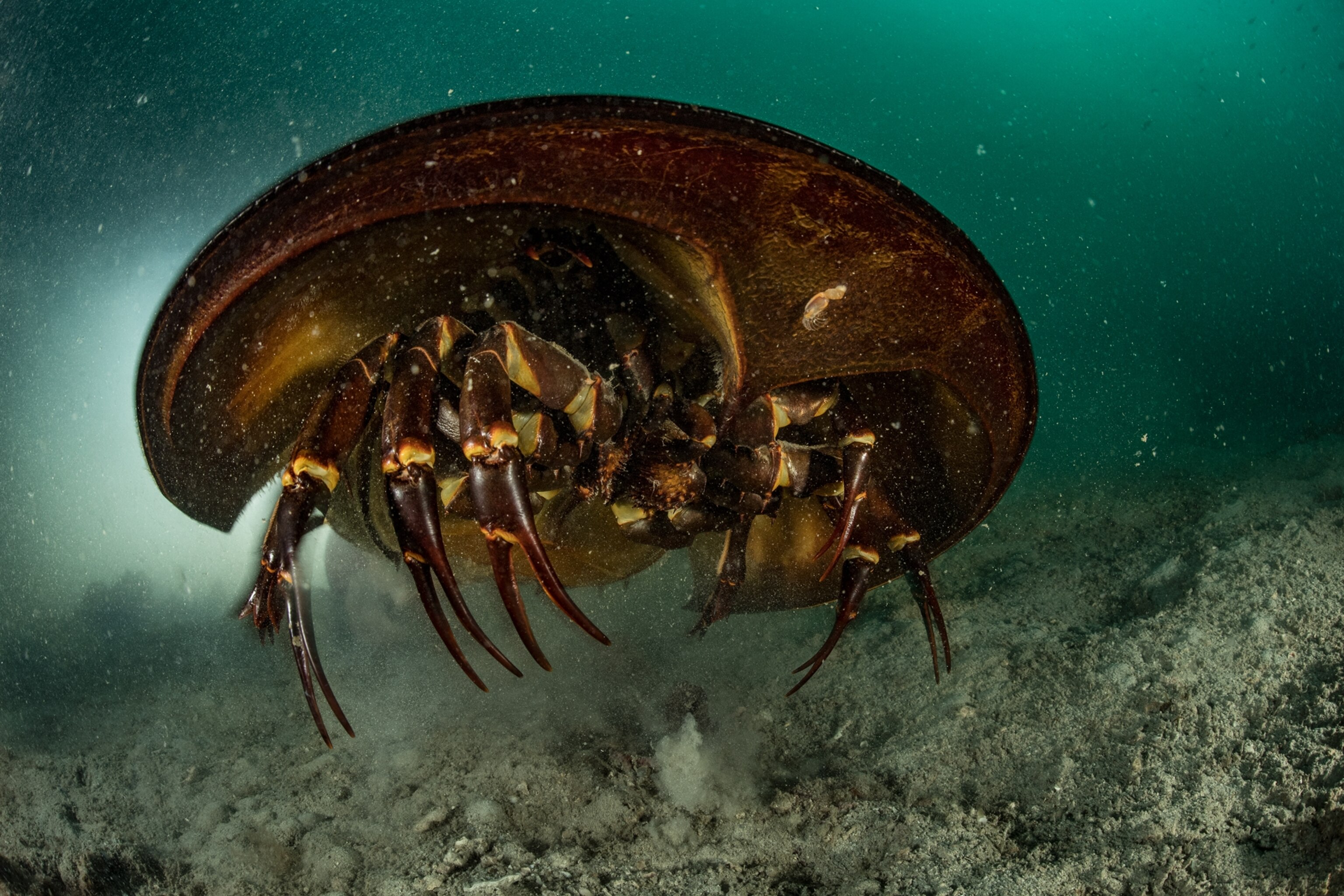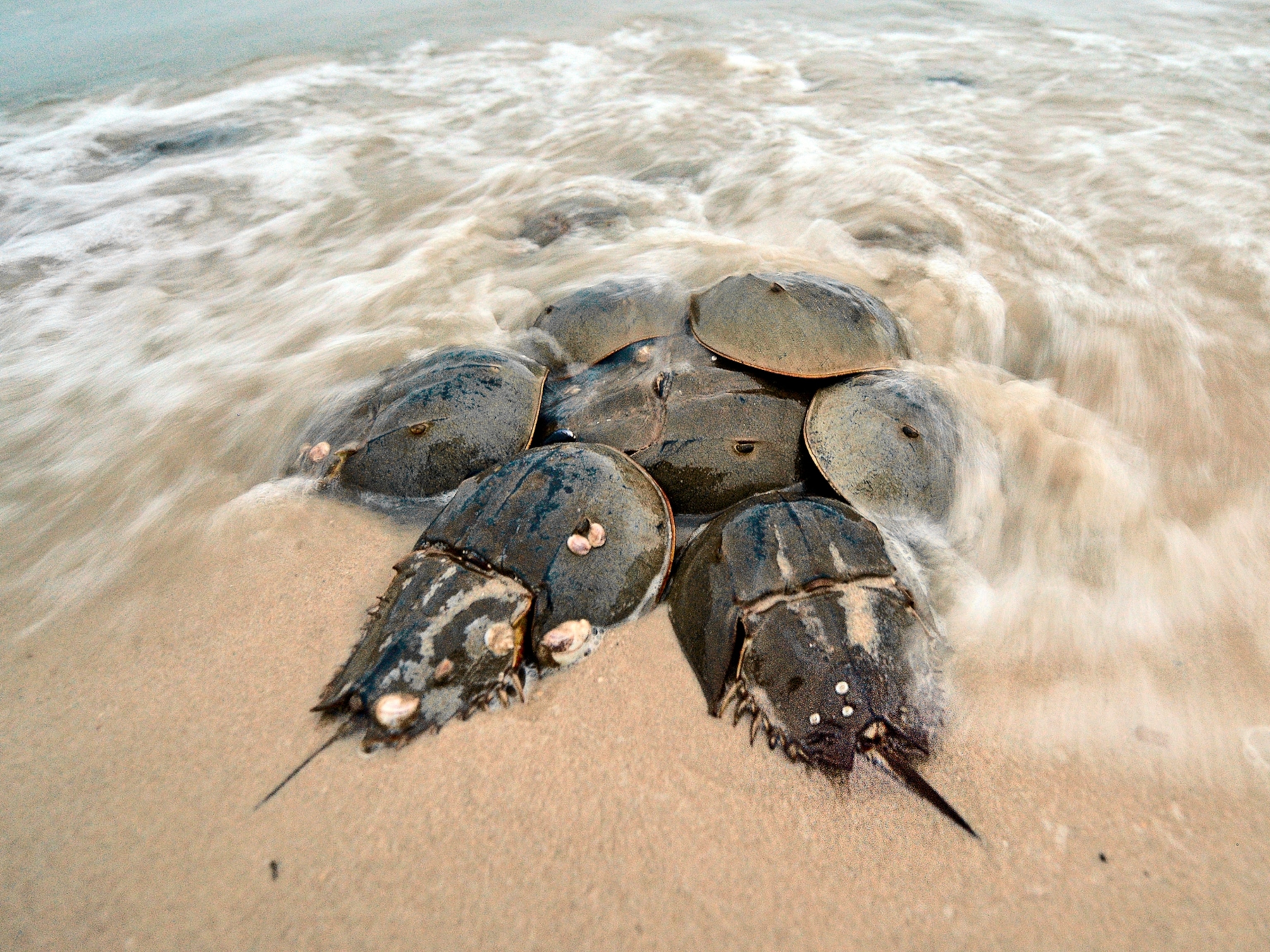
Dazzling photos show horseshoe crabs thriving in protected area
In the Philippines, the tri-spine horseshoe crab has made a home and other species are returning too.
Horseshoe crabs are built to last. With spiky tails, shells shaped like combat helmets, and sharp pincers at the end of eight of their 10 legs, these ancient invertebrates have been scuttling along the ocean floor relatively unchanged for some 450 million years.
They managed to survive the asteroid that killed the dinosaurs. Surviving humans may prove more difficult. Like many marine animals, horseshoe crabs are overfished for food and bait, and coastal development has destroyed spawning sites. But they also are collected en masse for their blue blood, which contains a rare clotting agent critical for the development of safe vaccines. The blood may be lifesaving for humans, but its harvest often kills the animals—particularly in much of Asia, where they are drained of all their blood rather than just a portion of it.


Tri-spine horseshoe crabs have lost more than half their population in the past 60 years. But on the Philippine islet of Pangatalan, the species is an unexpected symbol of resilience. For years the island’s 11 acres were degraded: trees cut down for timber, mangroves burned for charcoal, and coral reefs overfished with dynamite and cyanide. By 2011 these horseshoe crabs, about 15 inches long, were among the biggest creatures left.
Now a marine protected area, Pangatalan is starting to thrive again. Efforts to restore its reefs and plant thousands of trees have led many animals to return, including rare giant groupers that grow to some eight feet long.


(For Atlantic horseshoe crabs, love is a battlefield)
Horseshoe crabs may not be as charismatic as elephants or pandas, but perhaps they’ll inspire people to care more about wildlife. Appreciation for horseshoe crabs has grown thanks to their role in COVID-19 vaccine development. Conservationists hope that regard will translate to stronger habitat protections and wider adoption of a synthetic alternative to crab blood—saving horseshoe crabs just as they’ve helped save us.

This story appears in the August 2022 issue of National Geographic magazine.
Related Topics
You May Also Like
Go Further
Animals
- Behind the scenes at America’s biggest birding festivalBehind the scenes at America’s biggest birding festival
- How scientists are piecing together a sperm whale ‘alphabet’How scientists are piecing together a sperm whale ‘alphabet’
- Orangutan seen using plants to heal wound for first timeOrangutan seen using plants to heal wound for first time
- What La Palma's 'lava tubes' tell us about life on other planetsWhat La Palma's 'lava tubes' tell us about life on other planets
Environment
- The northernmost flower living at the top of the worldThe northernmost flower living at the top of the world
- This beautiful floating flower is wreaking havoc on NigeriaThis beautiful floating flower is wreaking havoc on Nigeria
- What the Aral Sea might teach us about life after disasterWhat the Aral Sea might teach us about life after disaster
- What La Palma's 'lava tubes' tell us about life on other planetsWhat La Palma's 'lava tubes' tell us about life on other planets
- How fungi form ‘fairy rings’ and inspire superstitionsHow fungi form ‘fairy rings’ and inspire superstitions
History & Culture
- This thriving society vanished into thin air. What happened?This thriving society vanished into thin air. What happened?
- These were the real rules of courtship in the ‘Bridgerton’ eraThese were the real rules of courtship in the ‘Bridgerton’ era
- A short history of the Met Gala and its iconic looksA short history of the Met Gala and its iconic looks
Science
- Why trigger points cause so much pain—and how you can relieve itWhy trigger points cause so much pain—and how you can relieve it
- Why ovaries are so crucial to women’s health and longevityWhy ovaries are so crucial to women’s health and longevity
Travel
- The key to better mindfulness may be your public gardenThe key to better mindfulness may be your public garden
- How to spend a weekend in Kitzbühel, Austria
- Paid Content
How to spend a weekend in Kitzbühel, Austria - What it's like trekking with the Bedouin on Egypt's Sinai TrailWhat it's like trekking with the Bedouin on Egypt's Sinai Trail




